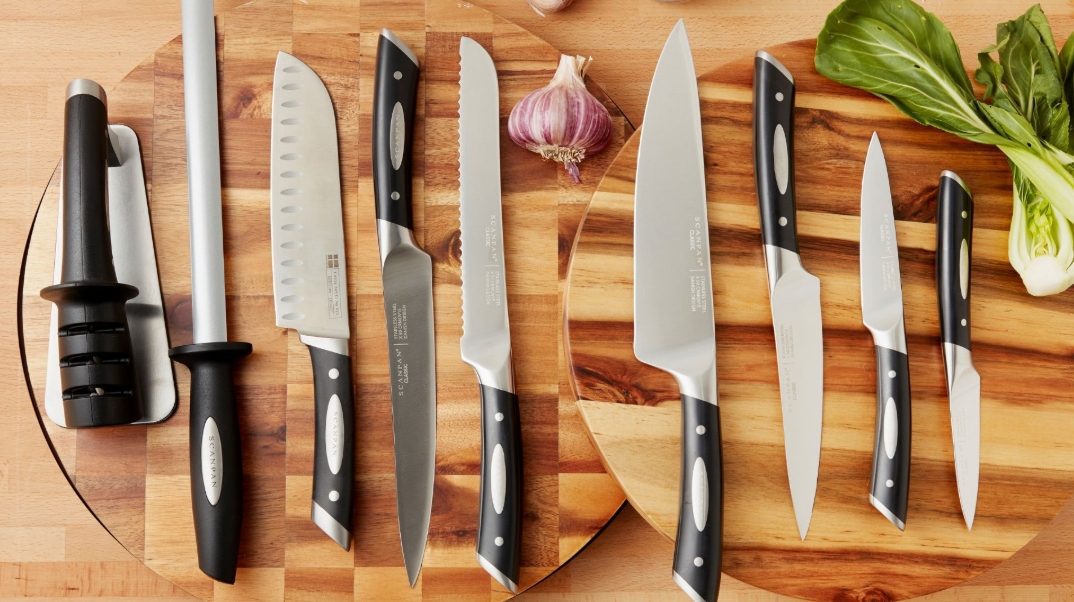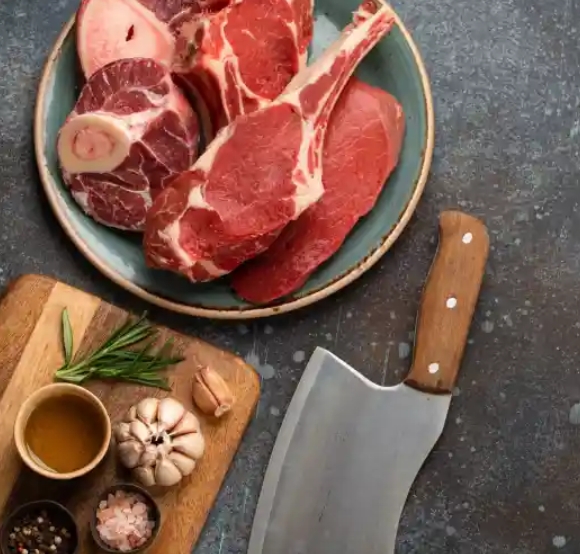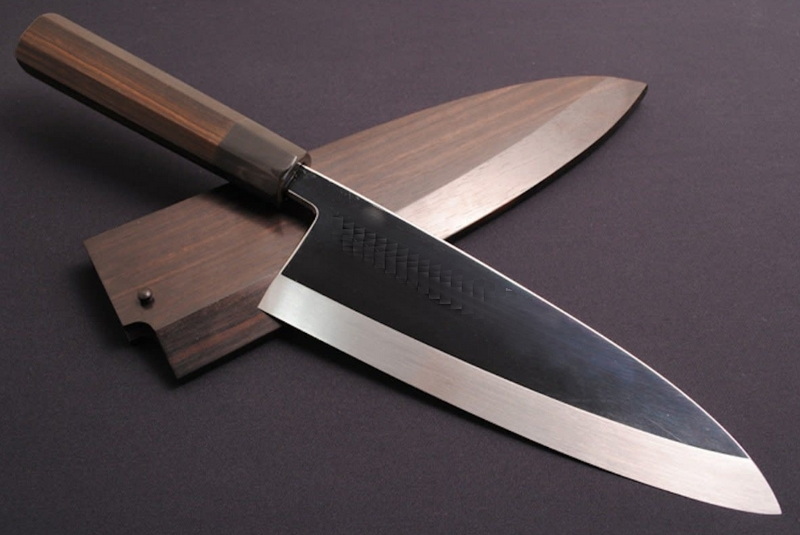

Views: 222 Author: Ella Publish Time: 2025-05-06 Origin: Site








Content Menu
● Blade Materials: The Foundation of Durability
>> Common Durable Knife Blade Materials
● Construction Quality: Forged vs. Stamped
● Handle Design and Ergonomics
● Tang Construction: Full Tang vs. Partial Tang
● Essential Knives in a Durable Set
● The Importance of Balance and Weight
● Blade Edge Types and Their Impact on Durability
● Maintenance and Care for Longevity
● Storage Solutions for Knife Sets
● Additional Considerations for Durability
>> Resistance to Corrosion and Staining
>> Warranty and Brand Reputation
>> Environmental and Health Considerations
● FAQ: Top 5 Questions About Durable Knife Sets
>> 1. What is the best blade material for a durable knife set?
>> 2. How can I tell if a knife set is well-constructed?
>> 3. What's the best way to care for my knife set to ensure durability?
>> 4. Are wooden handles less durable than synthetic ones?
>> 5. How many knives do I really need in a durable set?
Selecting a durable knife set is essential for both home cooks and professional chefs. A truly durable knife set is more than just a collection of sharp blades-it's a combination of high-quality materials, expert craftsmanship, ergonomic design, and thoughtful maintenance. This comprehensive guide explores the features that make a knife set stand the test of time, with practical tips, visual inspiration, and expert recommendations.

A kitchen knife set is one of the most-used tools in any home or professional kitchen. The durability of a knife set determines not only its lifespan but also the safety, efficiency, and enjoyment of your cooking experience. Let's explore the key features that separate long-lasting knife sets from those that quickly lose their edge.
The blade is the heart of every knife. The choice of material directly impacts sharpness, edge retention, rust resistance, and overall durability.
- High-Carbon Stainless Steel: Combines the sharpness and edge retention of carbon steel with the rust resistance of stainless steel. This is the gold standard for most premium knife sets, offering a balance of durability, ease of maintenance, and sharpness.
- Damascus Steel: Created by layering different steels, Damascus blades are renowned for their strength, sharpness, and beautiful wavy patterns. They are durable but require regular maintenance to prevent rust.
- Carbon Steel: Known for exceptional sharpness and edge retention, but more prone to rust and discoloration. Requires diligent care.
- Stainless Steel: Highly resistant to rust and easy to maintain, making it ideal for general use. However, may require more frequent sharpening compared to high-carbon options.
- Ceramic: Extremely hard and maintains its edge for a long time, but can be brittle and prone to chipping if dropped.
Choosing the right blade material is the first step in ensuring your knife set will remain functional and reliable for years.
How a knife is made affects its strength, balance, and longevity.
- Forged Knives: Crafted by heating and shaping steel under high pressure, forged knives are denser, stronger, and typically more durable. They usually feature a thicker bolster and full tang construction, which improves balance and strength.
- Stamped Knives: Cut from a sheet of steel, stamped knives are lighter and more affordable but may lack the strength and longevity of forged knives. High-quality stamped knives can still be durable if made from premium materials.
The construction process often determines how well a knife will hold up to repeated use and how resistant it is to bending or breaking under pressure.
A durable knife isn't just about the blade-the handle matters just as much.
- Material: Handles are commonly made from wood, plastic, composite resins, or stainless steel. Wood offers a classic look but requires more care; plastic and composites are durable and easy to clean; stainless steel is hygienic and robust.
- Ergonomics: A comfortable, non-slip grip reduces hand fatigue and enhances control, especially during extended use.
- Seamless Construction: Prevents water and food particles from entering joints, reducing the risk of handle breakage and bacterial buildup.
A well-designed handle not only extends the life of the knife but also ensures safety and comfort during use.
The tang is the portion of the blade that extends into the handle.
- Full Tang: The blade runs the entire length of the handle, providing superior strength, balance, and durability. Full tang knives are less likely to break under pressure and are a hallmark of high-quality sets.
- Partial Tang: The blade extends only partway into the handle, making the knife lighter but less durable.
For anyone seeking a knife set that will last through years of rigorous use, full tang construction is highly recommended.
A truly durable knife set isn't just about longevity-it's about versatility and practicality.
- Chef's Knife: The workhorse for chopping, slicing, and dicing.
- Paring Knife: Ideal for peeling and precision tasks.
- Bread Knife: Serrated edge for slicing bread and delicate foods.
- Utility Knife: Versatile for various mid-sized tasks.
- Specialty Knives: Santoku, boning, or carving knives for specific needs.
A well-rounded set ensures you have the right tool for every kitchen task, reducing wear and tear on individual knives.

Balance and weight play a crucial role in the durability and usability of a knife set. A well-balanced knife feels comfortable and natural in the hand, allowing for precise control and reducing fatigue during extended use. The weight of a knife should be substantial enough to provide stability but not so heavy that it becomes cumbersome.
- Balanced Knives: These distribute weight evenly between the blade and handle, making them easier to maneuver and less likely to cause strain.
- Heavier Knives: Can be more durable and effective for tough tasks, but may be tiring for some users.
- Lighter Knives: Offer agility and speed, but may not be as robust for heavy-duty cutting.
Choosing a knife set with the right balance and weight for your needs will contribute to both durability and comfort.
The design of a knife's edge also affects its long-term durability and performance.
- Straight Edge: Ideal for clean cuts and easy sharpening. Retains sharpness well with proper maintenance.
- Serrated Edge: Perfect for bread and tomatoes. Serrated edges stay sharp longer but are more challenging to sharpen.
- Granton Edge: Features hollowed-out grooves that reduce friction and prevent food from sticking. Useful for slicing meats and vegetables.
The choice of edge type should align with your cooking habits and the types of food you prepare most often. Regular maintenance, such as honing and sharpening, will keep any edge type performing at its best for years.
Even the most durable knives require proper care to maintain their performance.
- Hand Washing: Always wash knives by hand with warm, soapy water and dry immediately. Avoid dishwashers, which can dull blades and damage handles.
- Regular Sharpening: Use a honing rod for daily maintenance and sharpen with a whetstone or professional service as needed.
- Oiling (for Carbon Steel): Apply a thin layer of food-safe oil to carbon steel blades to prevent rust.
- Avoid Cutting on Hard Surfaces: Use wooden or plastic cutting boards to prolong edge life.
Proper maintenance not only extends the life of your knives but also ensures they remain safe and effective for every use.
Proper storage prevents accidental damage and maintains edge integrity.
- Knife Blocks: Traditional and convenient, but ensure the slots don't dull the blades.
- Magnetic Strips: Display knives for easy access and reduce blade contact.
- Knife Rolls or Guards: Ideal for professionals or those with limited space.
Storing knives correctly prevents chipping, dulling, and accidental injuries, all of which contribute to the overall durability of your set.
While material and construction are vital, there are other factors that contribute to the long-term durability of a knife set.
A durable knife set should resist corrosion and staining, especially if you frequently prepare acidic foods. High-quality stainless steel and certain coatings can provide added protection.
Some knives, particularly those made from harder steels, can be challenging to sharpen. Consider a set that balances edge retention with ease of sharpening to ensure you can maintain your knives at home.
Brands that offer extended warranties and have a reputation for quality are more likely to produce durable knife sets. Look for companies that stand behind their products and offer excellent customer support.
Choose knife sets made from non-toxic materials and sustainable sources. Some manufacturers use recycled steel or responsibly sourced wood for handles, contributing to both durability and environmental responsibility.
A truly durable knife set is built on a foundation of premium materials, expert craftsmanship, ergonomic design, and proper care. Look for high-carbon stainless steel or Damascus blades, full-tang construction, comfortable handles, and a well-chosen selection of essential knives. Maintain your set with regular sharpening, careful cleaning, and safe storage. By investing in these features, you ensure your knife set will remain sharp, safe, and reliable for years to come.

High-carbon stainless steel is widely considered the best for durability, combining sharpness, edge retention, and rust resistance. Damascus steel is also highly durable and visually striking, but requires more maintenance.
Look for forged blades (not stamped), full-tang construction, and seamless handles. These features indicate superior strength, balance, and longevity.
Hand wash and dry knives immediately after use, sharpen regularly, oil carbon steel blades, and store them in a knife block, magnetic strip, or protective sheath.
Wooden handles offer classic aesthetics but require more maintenance to prevent cracking and bacteria buildup. Synthetic and composite handles are more durable and easier to clean, making them ideal for high-use kitchens.
A basic durable set should include a chef's knife, paring knife, bread knife, and utility knife. Additional specialty knives can be included based on your cooking needs, but quality is more important than quantity.